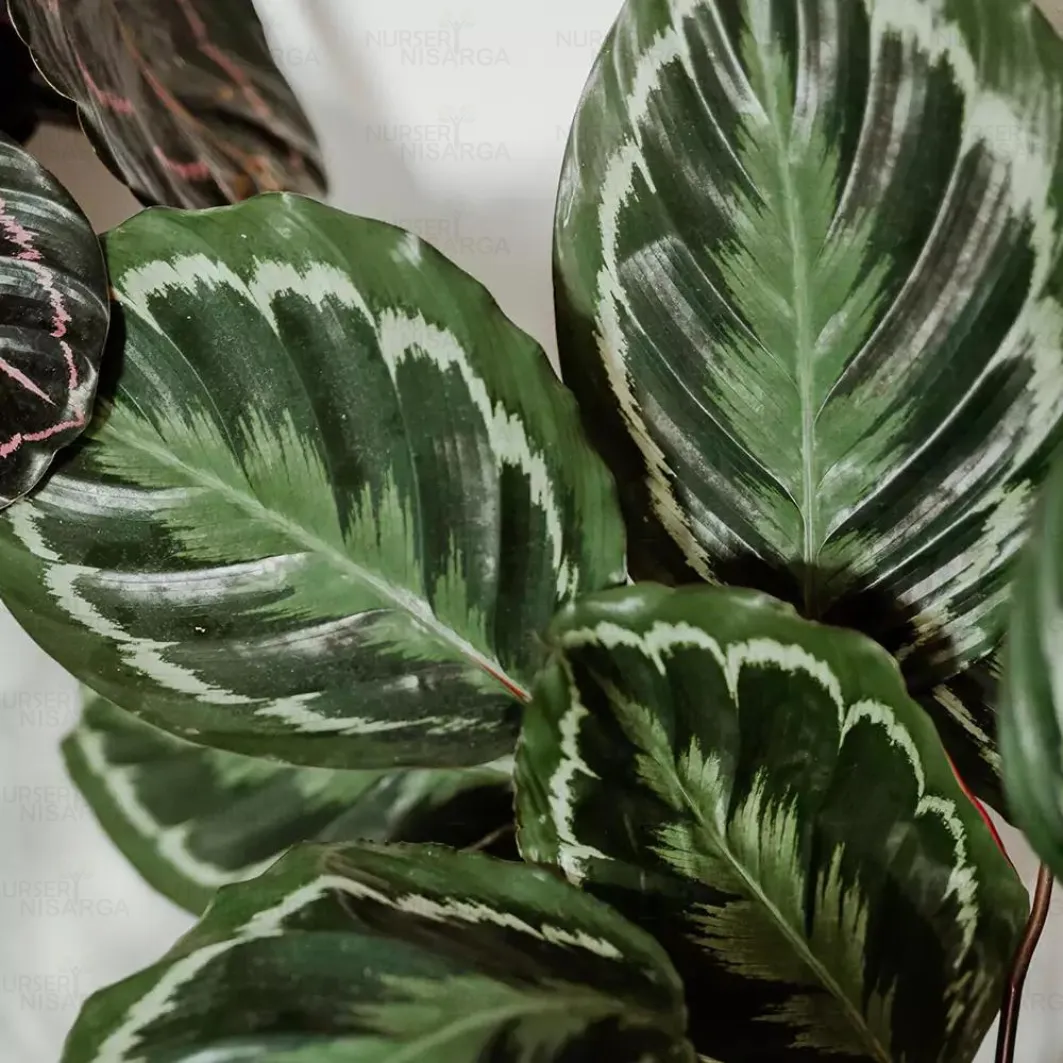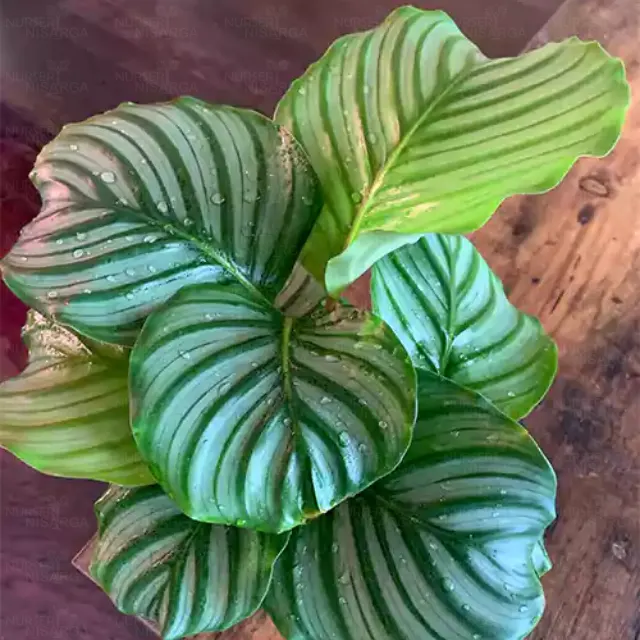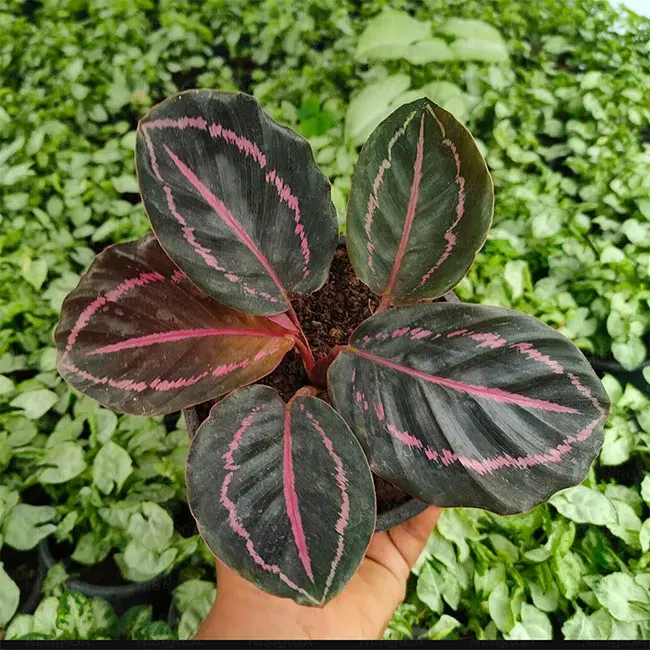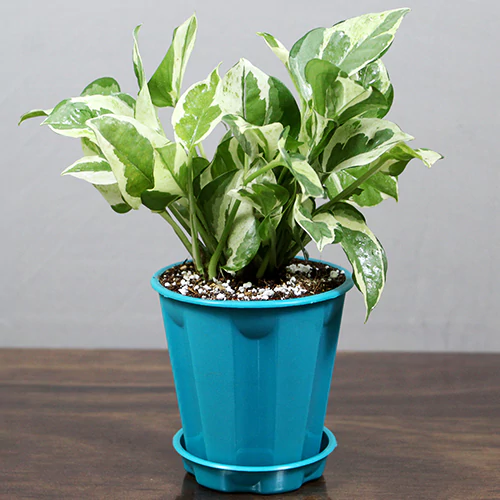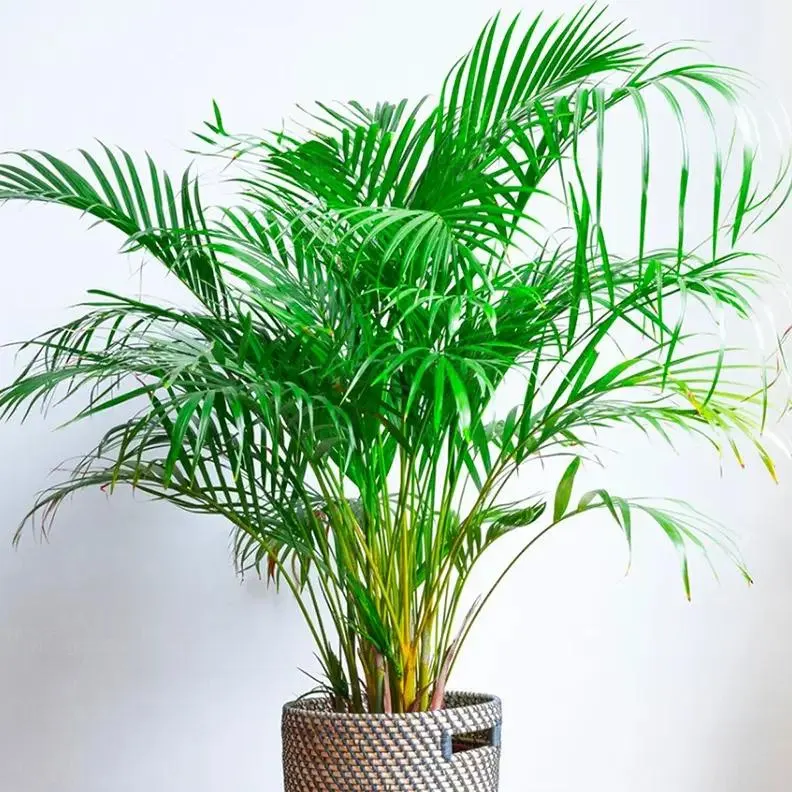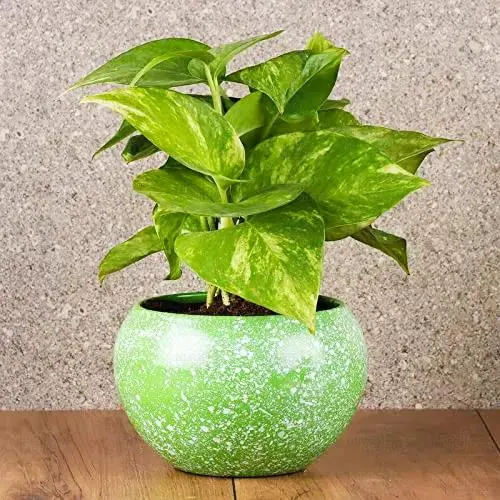Description
Calathea Roseopicta ‘Medallion’ – Plant
The Calathea Roseopicta “Medallion” genus includes a few dozen low-growing plants native to the American tropics. Calathea has some of the most beautiful, most decorative leaves in the plant kingdom. The popular M. tricolour has deep green, velvety leaves with yellow splotches down the midrib and arching red veins travelling to the leaf margins. They are fairly common as houseplants, but not necessarily easy to keep growing over the long term.
Requirement
They require plenty of warmth and humidity and are susceptible to a number of pests. That said, however, some people have more luck with Maranta species than with the closely related Calathea, which also feature beautiful leaves but can be a bit more temperamental. In terms of display, Calathea Roseopicta “Medallion” is all fairly low-growing plants, with none reaching over about 8 inches tall, making them excellent for grouped displays of low plants on a windowsill.
Growing Conditions: Light
Calatheas dislikes direct sunlight. If exposed to direct light, their leaves will fade in colour intensity and often develop blotches or patches. In the winter, when the plants go into dormancy (and sometimes die back completely), give them bright light to maintain growth.
Water: During the growth season, water frequently and never allows potting soil to dry out. They are very susceptible to drought. However, to avoid fungal problems, try not to get water directly on the leaves or let them sit.
Soil: A rich, peat-based potting soil with excellent drainage is beneficial.
Fertilizer: Feed with a weak liquid fertilizer throughout the growing season. Cut fertilizer back to once a month or so in the winter.
Propagation: Some Calathea (Maranta) species can be propagated by leaf cuttings or rhizome division. The most common (and easiest) way to propagate Maranta is by division at repotting. When repotting, simply divide the plant in half and pot up each half in a fresh pot. Keep new divisions very warm and moist during the first few weeks until new growth emerges.
Repotting: Calathea is not necessarily a fast-growing plant and even healthy specimens likely only need to be repotted every other year. During repotting, gently remove the plant from its old container, shake roots clean, and place it into a new container with fresh potting soil. Divide the plant during repotting to increase your stock. Report in the spring, before the growing season starts.
Varieties: There are many varieties of Calatheas, but the most popular by far is the tricolour variation that pops up in garden centres.
Grower’s Tips
A well-grown Calathea should have full, six-inch-long leaves rising from a short centre stem and draping down. They are strikingly beautiful plants. They thrive best with provided with greenhouse-like conditions: warm, moist, gentle airflow, and plenty of fertilizer.
My Experience
These plants, with their fleshy and thick leaves, are prime targets for pests (in my experience) and frequently seem to have problems with mealybugs, aphids, and mites. Signs of infestation include tiny webs on plants, clumps of white “powdery” residue, or visible insects on the plant. Treat infestations as soon as possible to prevent them from spreading to the rest of your collection.

